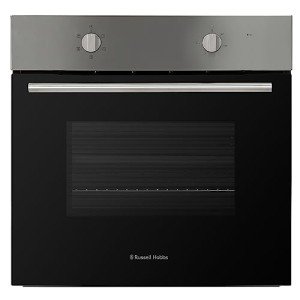The Comprehensive Guide to Built-In Cookers and Hobs
Built-in cookers and hobs have actually become significantly popular in modern-day kitchens, providing both performance and aesthetic appeal. These integrated appliances, created to fit perfectly into kitchen cabinets, make the most of area while improving the cooking experience. This article will explore the different types of built-in cookers and hobs, their benefits, upkeep pointers, and often asked questions.
Comprehending Built-In Cookers and Hobs
Built-in cookers typically consist of ovens, while hobs describe the cooking surface that can include various heating aspects such as gas burners, electric coils, or induction zones. When integrated, these two appliances produce an efficient and structured cooking setup.
Kinds Of Built-In Cookers and Hobs
When choosing a built-in cooker and hob, it's vital to comprehend the different types available. Here's a detailed table comparing the main types:
| Type | Description | Pros | Cons |
|---|---|---|---|
| Gas Hob | Uses gas as a fuel source. | Quick heat adjustment, culinary control. | Needs gas line setup. |
| Electric Hob | Uses electric coils or strong plate heating. | Normally cheaper, simple to tidy. | Slower to heat and cool down. |
| Induction Hob | Utilizes electromagnetic energy for cooking. | Quick heating, energy-efficient, safe. | Costly, needs suitable cookware. |
| Built-In Oven | Can be electric, gas, or mix. | Flexible cooking choices, various sizes. | Repaired area, prospective setup complexity. |
Advantages of Built-In Cookers and Hobs
- Space-Saving Design: Built-in systems save space by incorporating perfectly into the kitchen design, leaving more space for storage and counter tops.
- Visual Appeal: They offer a streamlined and contemporary look, elevating the style of any kitchen.
- Modification: With many styles and configurations, house owners can pick appliances that best fit their cooking practices and kitchen measurements.
- Boosted Functionality: Built-in cookers often include advanced functions such as self-cleaning alternatives, numerous cooking modes, and programmable timers.
- Security Features: Modern hobs include functions like automatic shut-off and kid locks, improving safety in the kitchen.
Maintenance Tips for Built-In Cookers and Hobs
To make sure the durability and ideal efficiency of built-in cookers and hobs, correct upkeep is important. Below are essential maintenance tips:
- Regular Cleaning: Wipe spills and discolorations instantly to avoid them from solidifying or ending up being harder to clean.
- Use Appropriate Cleaning Supplies: Avoid abrasive materials that can scratch surfaces. Use cleaner specifically designed for the kind of appliance you have.
- Inspect Gas and Electrical Connections: Regular inspections can avoid leaks and make sure optimum efficiency.
- Adjust Temperature Settings: If you discover disparities in cooking temperatures, think about recalibrating the oven.
- Schedule Professional Servicing: Annual check-ups can assist identify and rectify small concerns before they intensify.
Picking the Right Built-In Cooker and Hob
When picking a built-in cooker and hob, several aspects must be considered:
1. Cooking Preferences:
- If you delight in fast temperature level adjustments, a gas hob may be perfect.
- For energy effectiveness and uniform cooking, induction hobs are preferred.
2. Kitchen Size:
- Consider the area readily available for setup. Step cabinets and other appliances to ensure the selected system fits conveniently.
3. Design and Design:
- Opt for designs that complement your kitchen's decoration. Built-in units been available in different finishes, such as stainless steel, black, or customized kitchen cabinetry.
4. Budget plan:
- Establish a spending plan that elements in purchase expenses, installation costs, and long-lasting operating costs.
5. Brand Reputation:
- Research credible brands understood for dependability and customer support. Reading evaluations and looking for suggestions can also be handy.
Frequently Asked Questions (FAQs)
Q1: Are built-in cookers and hobs more pricey than conventional systems?A1: Generally, built-in cookers and hobs can be more expensive upfront due to installation and style. Nevertheless, they may provide long-term savings through energy performance.
Q2: Can I install a built-in cooker or hob myself?A2: While some might be installed by property owners, it is often suggested to work with an expert, particularly for gas or complex electrical connections, to make sure safety and compliance with regional codes.
Q3: What is the typical life-span of built-in cookers and hobs?A3: With correct care, built-in cookers and hobs can last anywhere from 10 to 15 years. gas oven and hob built in can extend their life.
Q4: Is it possible to integrate various kinds of hobs with the very same oven?A4: Yes, lots of cooking areas feature a mix of hobs (e.g., gas and induction) alongside a built-in oven, permitting flexible cooking alternatives.
Q5: How do I know if my hob is energy-efficient?A5: Look for energy effectiveness rankings and consider induction hobs, which typically use superior energy efficiency compared to gas or traditional electric hobs.
Built-in cookers and hobs use a mix of modern-day design and advanced cooking innovation, improving any kitchen's performance and design. By comprehending the different types available, their advantages, and upkeep needs, property owners can make informed decisions when purchasing these necessary kitchen appliances. With correct choice and care, built-in cookers and hobs can provide years of enjoyable cooking and a smooth kitchen experience.

